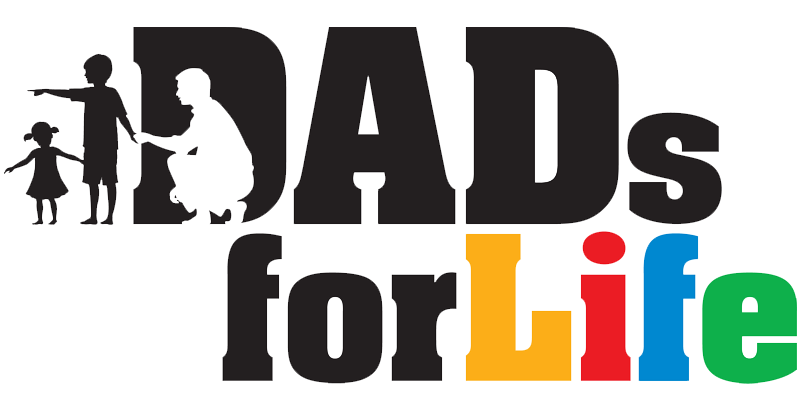Introduction
 The following article summarises research presentations in Greater Jakarta and Singapore and distils relevant points for discussion and reflection in shaping fatherhood.
The following article summarises research presentations in Greater Jakarta and Singapore and distils relevant points for discussion and reflection in shaping fatherhood.
The presentations were made at Panel 4: Fatherhood Ideology, Aspirations and Motivations as part of the first Asia fatherhood research conference entitled Fatherhood in 21st Century Asia: Research, Interventions, and Policies.
Notable Research Findings
Life situations of young fathers in Greater Jakarta: Employment, health status and gender attitudes (Utomo et al., 2010)
In Indonesia, reform movements have sought a transformation so that fathers are more involved with family caregiving and development, instead of just being the economic providers for the family through successful careers. This study then attempts to investigate how successful those reform movements have been in Greater Jakarta.
This quantitative study leveraged on data from the 2009/2010 Jakarta Transition to Adulthood Survey (N=3006). Labour force participation, working hours, satisfaction regarding future job prospects, emotional and financial independence from parents, financial contributions to parents, gender attitudes, attitudes towards children, living arrangements and health and wellbeing were some of the issues observed. Most analyses compared outcomes between fathers and non-fathers, as well as that between mothers and non-mothers.
The study found that:
• There is a high level of employment among fathers but a relatively low level of employment among mothers. There is little opportunity for part-time work, and fathers work very long hours.
• Men in general believed that they were healthier, as compared to how women perceived their own health.
• The observed life situations tend to be consistent with the attitudes and values of fathers, but mothers have different values and their values are often not consistent with their life situations. Fathers tend to be less egalitarian as well.
Men’s transition to fatherhood: An overview of first-time fathers’ experiences with fathering, marriage and work-life issues (Lim, 2010)
This study questions the transitional experiences that an expectant married man goes through when he becomes a father for the first time. It also outlines various factors that may help or hinder first-time fathers to better adjust to the transition to fatherhood in the local Singapore context.
This qualitative study followed men’s transitional passage to first-time fatherhood before and after birth through the third year of their child’s life, to analyse men’s needs in their preparation for fatherhood, their personal, marital, family and work-life adjustment issues, early fathering adjustments and father-child involvements.
It then suggested specific first-time fathering tips and strategies, developmental family programmes and policies to support first-time fathers.
Some key findings were:
• There are eight preparatory fatherhood preparatory factors: their own father’s influence on them, alternate father models, personal characteristics, prior child care experiences, marital wellbeing, childcare planning, practical preparations; and work-life arrangements.
• There are five fatherhood transitional adjustment factors: father-child involvement; father’s coping; work-life adaptation; marital well-being after birth; and living and childcare support arrangements.
• Recommendations included increasing services and trained personnel in family and parenting support programmes, incorporating fathers into family social work, case work and counselling, and having more supportive work-life practices and policies for fathers.
Explaining variance within constructions of fatherhood between the Chinese and Malay communities of Singapore (Tan, 2010)
This study adopts a social-constructivist perspective, whereby groups construct knowledge for one another and collaboratively create shared meanings, thereby offering a lens that is “consistent with an appreciation for the increasingly complex set of social, cultural and legal forces associated with the multiple pathways to paternity, social fatherhood and responsible fathering” (Marsiglio, Amoto, Day & Lamb, 2000, p. 1176).
The study then attempts to shed light on parallel factors that give rise to variance in constructions of fatherhood between ethnic groups. It also alerts us to the historical flexibility of fatherhood where there is no true prototypical traditional father, and brings to the fore cultural factors that decisively help shape fatherhood construction.
This qualitative study interviewed 20 respondents from eight households, representing Chinese and Malay ethnic groups in the proportion 3:5 respectively. The intellectual weight of this study is then set in the unpacking of the divergences in meanings within the broad stroke of ‘involvement’.
Some key findings are:
• The cultures and conduct of fatherhood were unravelled through a predominant religious lens which spilled over to shape gender ideologies within the Malay household.
• While Chinese families surveyed primarily subscribed to the ‘new father’ role, they had a more structural origin, given that Confucianism – a secular tradition – has lost some of its traditional intentions within modern developmentalism.
• Overall, both communities exhibited a cultural ‘lag’ either in terms of its adoption and relation to the general socialised view of ‘a universal, new (and more involved) father’; or in terms of a temporal one where the culture of fatherhood is predicated upon the changes in conduct of their wives as mothers.
Plenary Discussion
Participants were particularly interested in the first paper presented by Dr Dwisetyani. A question was raised on whether differences in children’s health existed and if there were any discussions on inter-religious marriage in Indonesia. These two factors were however not within the scope of the paper.
When asked if the social cohesion of families were strengthened due to the transfer of payments, Dr Dwisetyani responded that while non-fathers and non-mothers made more regular payments to parents, fathers and mothers on the other hand made more ad-hoc payments to parents. Whether this can be measured as an operational factor in social cohesion is another issue altogether.
Dr Dwisetyani then carried on, saying that fathers had less of an emotional relationship compared to mothers, demonstrating the strong model of fathers being the authoritative figure. Young fathers also liked the role of provider.
It was further emphasised that women did not go to work as husbands did not allow them to, and there was a lack of child-care arrangements as well. With increasing education, however, fathers wanted to be more involved in childcare, while mothers wanted to be more involved in work, yet neither allowed entry to the other.
Mr Tan then replied to a query on whether converting to the same religion acted as a protective factor in preventing divorce, compared to couples who maintained different religions after marriage. Although this was not within the scope of the paper, he noted that it would be interesting to observe inter-ethnic marriages and see if religion became an instrumental tool. He went on to comment that it probably would during divorce and custody battles.
For the final question on what issues weakened men as change-makers, Mr Tan was careful to remind the audience that many practices today are latent and minor adjustments e.g. ferrying a child to school, or taking up a hobby to share with a child. He spoke of smaller, younger Malay families which have more mainstream attitudes, and cited the example of a father who engaged his son through music, not as a traditional father, but as a buddy.
Conclusion
In this day and age, fathers are becoming -and in fact need to become- more involved within the private sphere. They can no longer be simply relegated to their work in the public sphere, fulfilling the roles of breadwinner and provider that they have become used to.
In order to support men in becoming involved fathers, various areas to consider are: formal and informal marriage and parenting support and training; promoting and supporting fatherhood; antenatal courses and support groups; supporting procreation; family and work-life policy; child-care service and domestic help provisions; and of course paternity leave policy.
Finally, there are significant opportunities for cross-country multi-site comparisons in trends of fatherhood culture and conduct. Using data from peer cities like Hong Kong, Japan and Taiwan, as well as developing nations in ASEAN like Vietnam and Indonesia, the cultural and structural bases to fatherhood constructions across these countries can be compared and better analysed against their developmental context and policy impact.
It would also to useful to know how similar Singaporean fathers are compared other Asian fathers in their pattern of fathering based within the context of their cultural practices and historical roots.
References:
1. Lim P. A. A. (2010). Men’s transition to fatherhood: An overview of first-time fathers’ experiences with fathering, marriage and work-life issues. Proceedings from International Conference on Fatherhood in the 21st Century Asia: Research, Interventions, and Policies, Singapore.
2. Marsiglio, W., Amato, P., Day, R. D. & Lamb, M. E. (2000). Scholarship of fatherhood in the 1990s and beyond. Journal of Marriage and the Family 62(4). 1173-1191.
3. Tan, W. Y. S. (2010). Explaining variance within constructions of fatherhood between the Chinese and Malay communities of Singapore. Proceedings from International Conference on Fatherhood in the 21st Century Asia: Research, Interventions, and Policies, Singapore.
4. Utomo, I. D., Mcdonald, P., Hull, T., Utomo, A., Jones, G. W., Utomo, B., Suparno, H. & Dadun, D. (2010). Life situations of young fathers in greater Jakarta: Employment, health status and gender attitudes. Proceedings from International Conference on Fatherhood in the 21st Century Asia: Research, Interventions, and Policies, Singapore.
About the Author: The Dads for Life Resource Team comprises local content writers and experts, including psychologists, counsellors, educators and social service professionals, dedicated to developing useful resources for dads.
First published on 28-04-2011.
